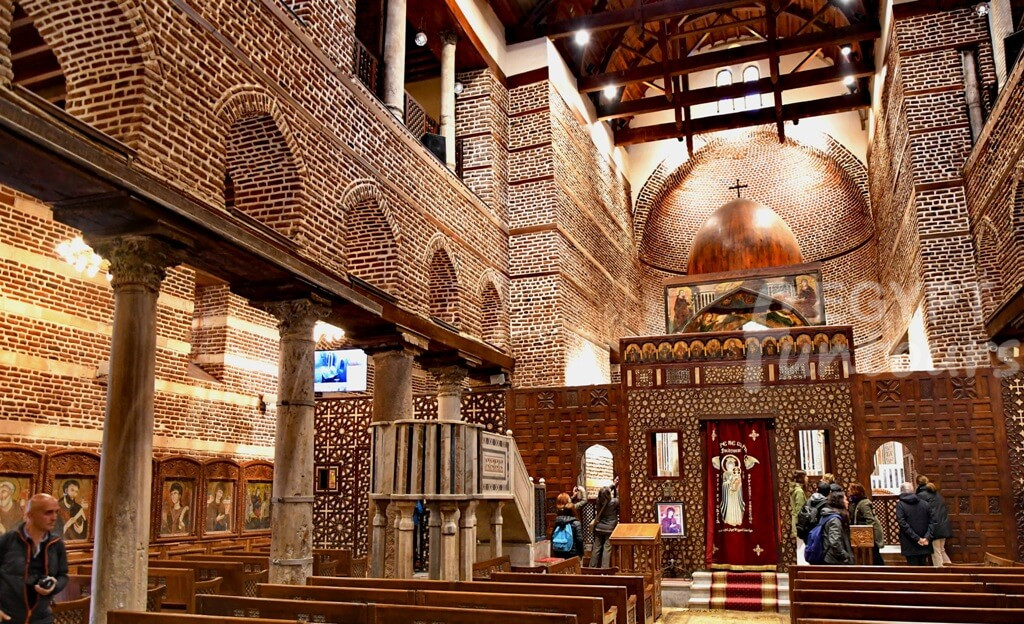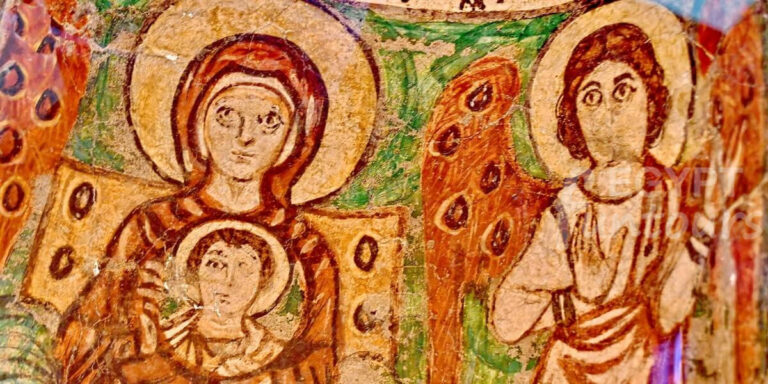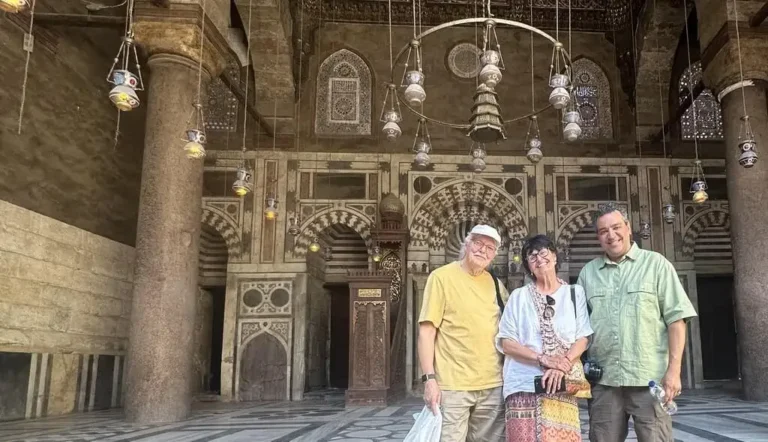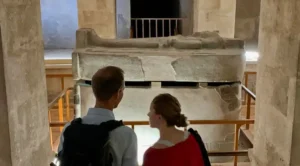Church of Saint Sergius (Abu Serga)
The Church of Saint Sergius (Abu Serga) sits north of the Coptic Museum. You reach it down a narrow cobbled lane. The church itself lies about three meters below street level. It honors two Roman officers, Sergius and Bacchus, martyred in Syria in 303 AD. The oldest part of the building dates from the fifth century. Builders constructed it over a cave. Tradition holds the Holy Family hid here during their Flight into Egypt. Fire later damaged the structure. They restored it in the eighth century.
Restoration and Significance
The Church of Saint Sergius (Abu Serga) underwent another restoration. They partially rebuilt it during the Fatimid era (tenth to twelfth centuries). Despite these changes, the Church of Saint Sergius stands as a model of early Coptic churches.
Church Description
![]()
A flight of stairs leads to the entrance. It opens to the side of the narthex. Here, you find a large, boarded-over plunge bath. The baptistery sits at the narthex’s end. The church’s nave features an arched timber roof. Marble pillars separate it from the side aisles.
Figures once decorated the columns, but today they are only dimly discernible. On the right-hand wall, a Biblia Pauperum depicts Christ’s birth, miracles, baptism, and resurrection. This piece dates to medieval times. The church also holds an interesting thirteenth-century carving of the Last Supper. Jesus sits with his disciples at a table. Its shape resembles an ancient Egyptian offering table. Indeed, a Coptic altar closely matches such a table. It has a raised molding with a break in the border for water drainage.
The marble pulpit in the nave rests on ten columns. It is a modern copy of the pulpit in Saint Barbara’s church. Fragments of the original rosewood pulpit, inlaid with ebony and ivory, now reside in the Coptic Museum.
Beautiful ebony
The sanctuary screen boasts several decorated panels. They may have originated from door leaves. The upper part contains small ebony panels. Large crosses of solid ivory, exquisitely chiseled with scrollwork, adorn them. Lower down, the ivory forms arabesque shapes. Icons depict the twelve apostles, with the Virgin Mary at the center.
Brass oil lamps hang from the ceiling. Two steps lead up to the sanctuary and the side chapels. The original canopied altar is one of the Coptic Museum’s old wing treasures.
The central apse wall is encrusted with marble. Mosaics decorate it. Parts of the original paintings are still visible on the dome. The side chapels house numerous icons. One depicts the Flight into Egypt. It shows Mary, wearing a crown, on a mule and holding Jesus. Joseph and Mary Magdalene follow her.
The Holy Crypt
The crypt lies to the left of the sanctuary. Here, the Holy Family supposedly hid during their flight into Egypt. The original cave sat beneath the transept’s center. Workers transformed it into a three-aisled chapel. An altar in the wall resembles a tomb recess. A commemorative mass is celebrated in the Church of Saint Sergius on June 1. Copts believe this day marks the flight. Despite current restoration efforts, visitors can still see the crypt.

























